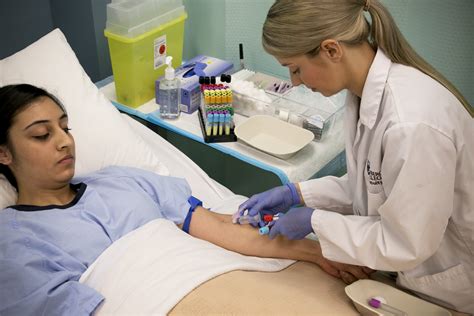How Much Does a Phlebotomist Earn? Complete Salary guide & Factors Influencing Pay
If you’re considering a career as a phlebotomist or simply curious about the earning potential in this healthcare field, you’ve come to the right place. Phlebotomists play a vital role in the medical community by collecting blood samples for testing, donation, or transfusions. But how much do they earn? What factors can influence their salary? This comprehensive guide will answer these questions adn provide valuable insights into the financial prospects of a phlebotomist career.
Understanding the Role of a Phlebotomist
Phlebotomists are trained healthcare professionals responsible for drawing blood from patients, handling specimens, and ensuring the accuracy and safety of the process. They often work in hospitals, clinics, laboratories, blood donation centers, and other healthcare settings. Their role is critical for accurate diagnostics and patient care.
Average Salary of a Phlebotomist
National Average Salary
Based on recent data from the U.S. Bureau of Labor statistics (BLS) and industry reports, the average annual salary for a phlebotomist in the United States ranges from $30,000 to $40,000. Though, this can vary widely depending on factors such as location, experience, certifications, and the type of employer.
Hourly Wage Range
On an hourly basis,phlebotomists earn between $14 to $20 per hour,with some high-demand areas or specialized settings offering higher pay.
Salary Breakdown by Experience Level
| Experience Level | Average Annual Salary | Entry-Level | mid-Level | Senior/Experienced |
|---|---|---|---|---|
| Salary Range | $28,000 – $45,000 |
Geographical Influence on Phlebotomist Salaries
Location considerably impacts the earning potential of phlebotomists. Urban areas, states with a higher cost of living, and regions with higher healthcare demands tend to offer higher salaries.
Top-paying States for Phlebotomists
- California - $40,000 to $50,000
- New York – $38,000 to $48,000
- Massachusetts – $36,000 to $45,000
- Texas – $32,000 to $42,000
Factors Influencing Phlebotomist Salaries
1. Location and Cost of Living
As noted, geographic location plays a crucial role. Higher living costs usually correlate with higher salaries to compensate for expenses.
2. Education and Certifications
Certified phlebotomists typically earn more than those without certification. Popular certifications include the CPT (Certified Phlebotomy Technician) from the National healthcareer Association (NHA) or the American Society for Clinical Pathology (ASCP).
3. Experience and Seniority
More experienced phlebotomists, who have honed their skills over years of practice, often command higher wages and may qualify for supervisory roles.
4. Employer Type
- Hospitals and Medical Centers: Higher pay due to high volume and demanding surroundings.
- Private Clinics and Small Labs: Moderate pay, potentially less overtime.
- Blood Donation centers: Competitive wages, with additional benefits.
5. Special Skills and Additional Certifications
Specializations such as pediatric phlebotomy or phlebotomy in a laboratory setting can enhance earning potential.
Benefits of a Career as a Phlebotomist
- Affordable training programs and certification options.
- High employment demand with steady job prospects.
- Opportunities for career advancement into supervisory or specialized roles.
- Flexible work schedules in many settings,including part-time options.
Practical Tips to Maximize Your Salary as a Phlebotomist
- Obtain relevant certifications to improve qualification and earning potential.
- Gain experience in diverse healthcare settings.
- Consider relocating to higher-paying regions or states.
- Build a network and seek extracurricular training for specialized skills.
- Keep up-to-date with industry advancements and continuing education.
Case Studies: Real Life Experience of Phlebotomists
Jane’s Journey: From Entry-Level to Senior Phlebotomist
Jane started her career in a small community clinic earning $28,000 annually. After obtaining her Certified Phlebotomy Technician certification and gaining two years of experience, her salary increased to $35,000. Moving to a large urban hospital, she now earns $45,000, along with benefits and opportunities for further specialization.
Mark’s Experience: Specialization Pays Off
Mark specialized in pediatric phlebotomy after certifications and training, earning an extra $5,000 annually.He works in a dedicated pediatric hospital, where his skills are highly valued and rewarded.
Conclusion
The earning potential for a phlebotomist is promising, especially for those willing to gain experience, obtain certifications, and explore high-demand regions. While the average salary ranges from $30,000 to $40,000, dedicated professionals can earn significantly more, especially in specialized or managerial roles.With healthcare industry growth and the continued need for blood testing and donation services, a career in phlebotomy offers stability, growth, and a chance to make a meaningful impact. Whether you’re just starting out or looking to advance your career, understanding the factors influencing pay can help you make informed decisions for a rewarding path ahead.
